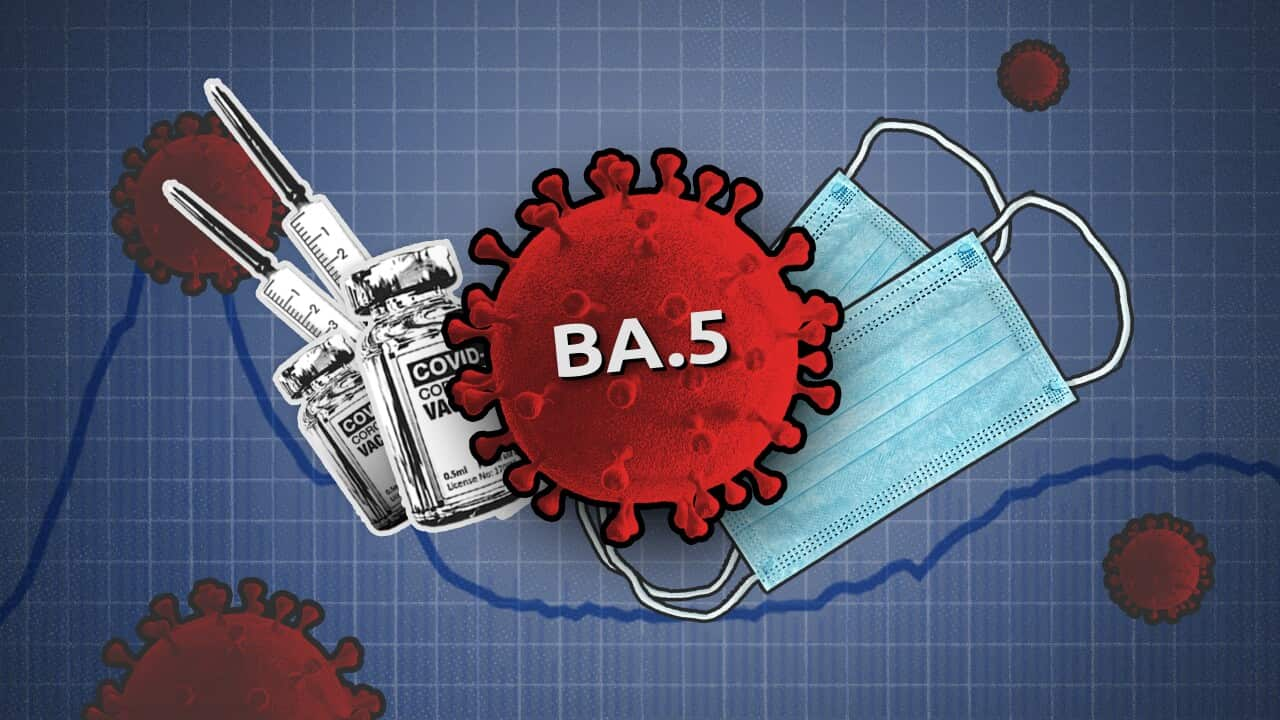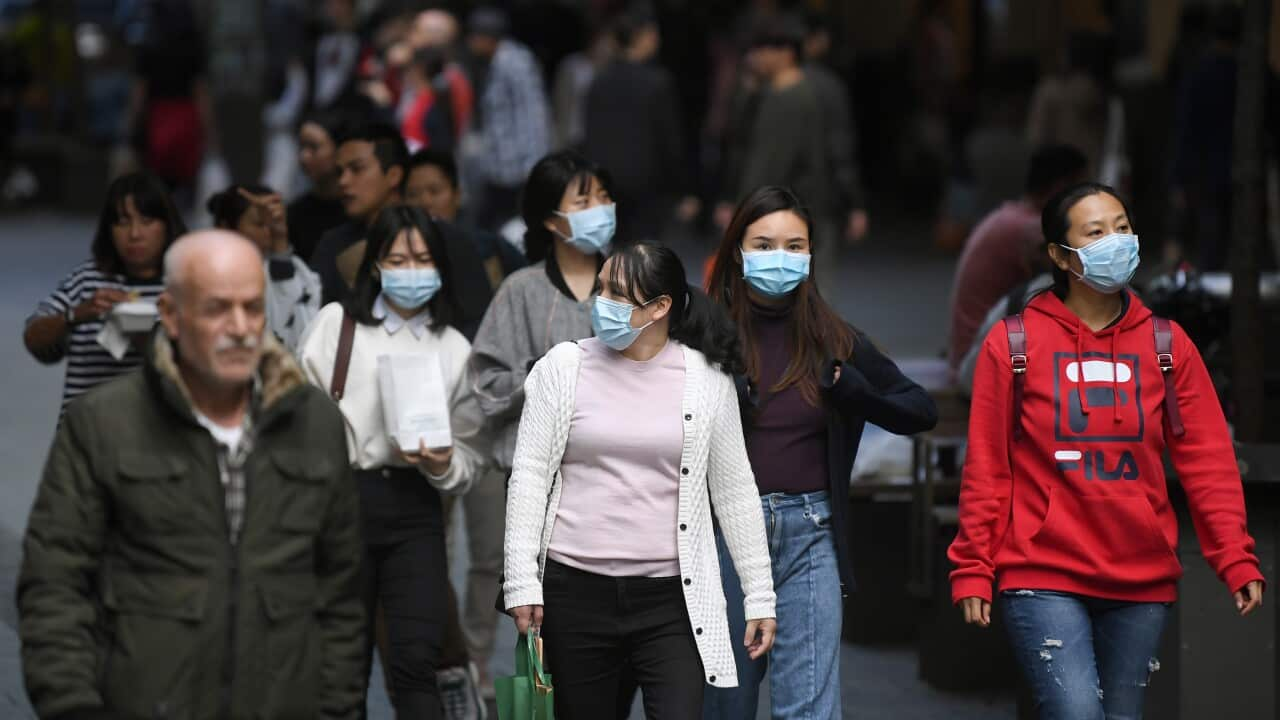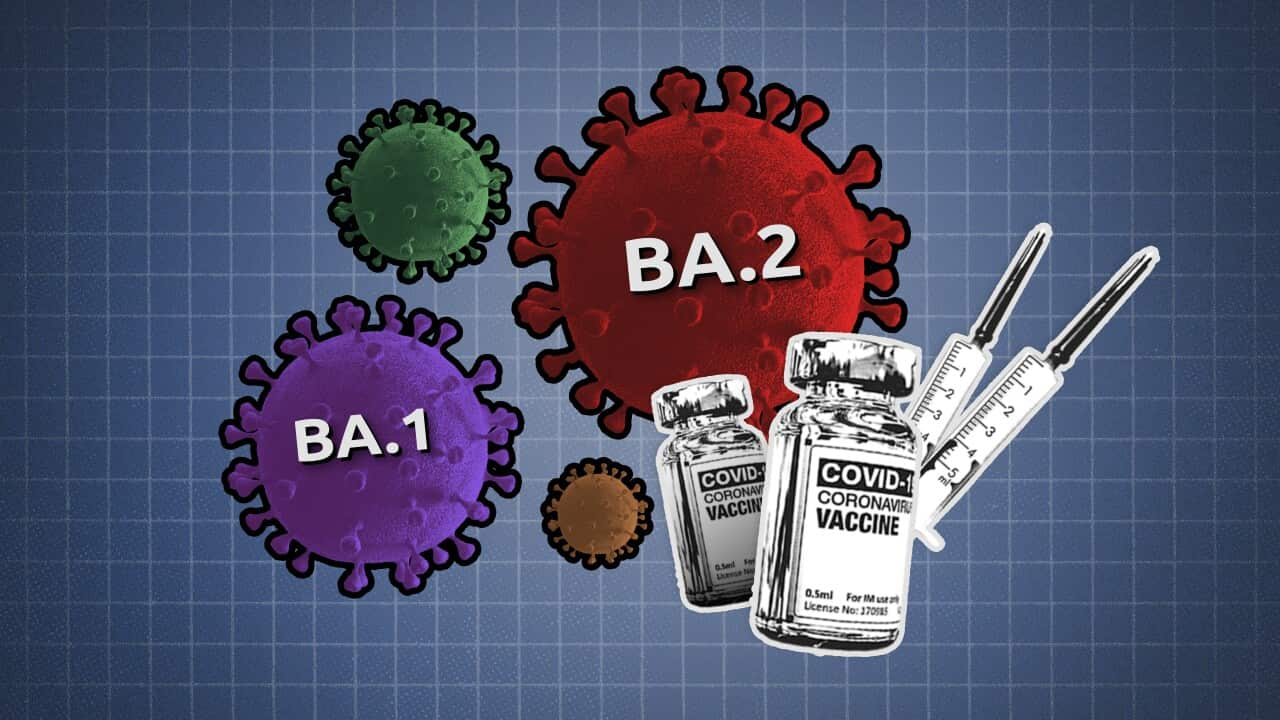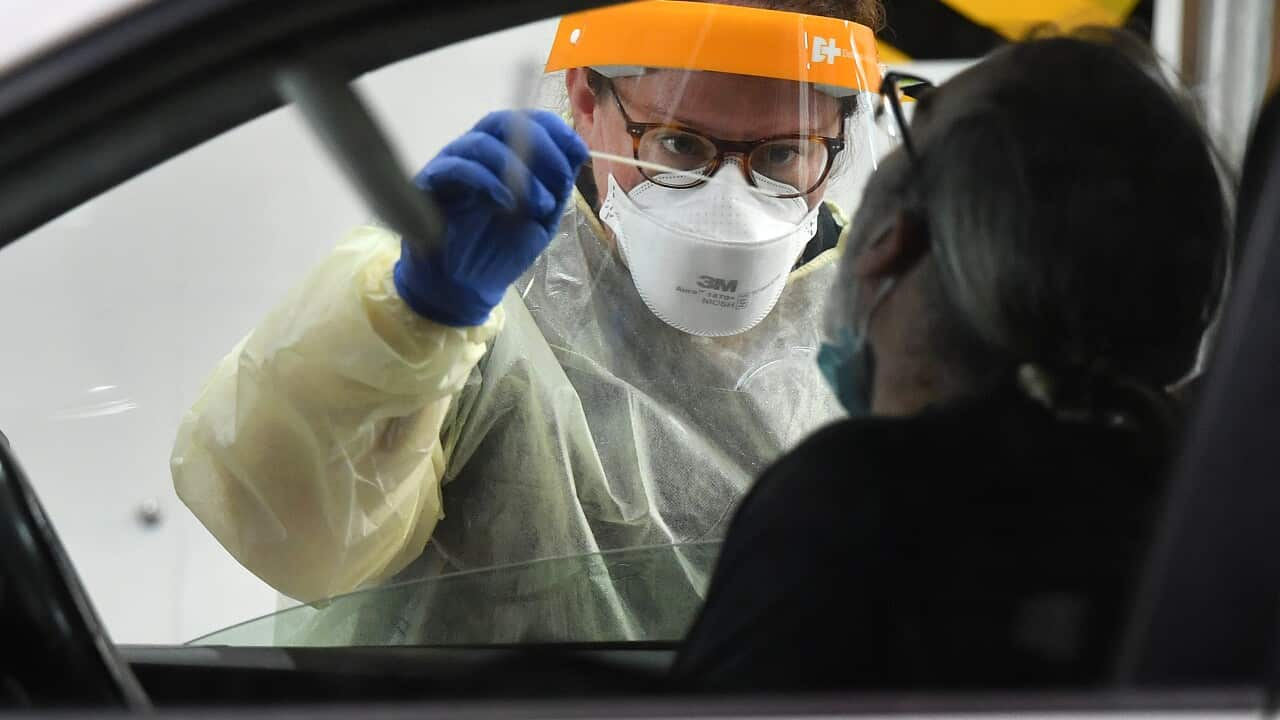Key Points
- The BA.5 Omicron subvariant is becoming one of the most dominant in Australia.
- Here's what we know so far.
Australia continues to record each day and experts say a growing number appear to be of the BA.5 subvariant.
While restrictions such as mask mandates , experts are warning the pandemic is far from over, and are urging the government and public to remain cautious.
So what exactly is the BA.5 subvariant? Should you be worried? And how can you protect yourself against it?
What is BA.5?
BA.5 is a subvariant of the Omicron strain of COVID-19. Omicron was first reported to the World Health Organization (WHO) from South Africa on 24 November 2021 and was declared a on 26 November.
Professor Adrian Esterman, chair of biostatistics and epidemiology at the University of South Australia, told SBS News the subvariants are all similar to the original Omicron variant, with slight differences.
"BA.4 and BA.5 have got very similar mutations on the spike protein, that's the bit that attaches to the receptor in the human body," he said.
"Basically of those subvariants ... are all in Australia at the moment and will be competing against each other.
"At the moment BA.2 is the majority of cases in Australia, but BA.5 is starting to take over."
How transmissible is it?
Professor Esterman says the BA.5 variant is becoming the most dominant subvariant in Australia, largely because it is highly transmissible.
"It's up to 25 per cent more transmissible than BA.2, mainly because it can evade our immune system," he said.
"In other words, if you're vaccinated, or if you've recovered from an infection, especially if it was BA.1 or BA.2, you can become far more easily infected."
With this in mind, Professor Esterman expects to see case numbers continue to rise in Australia over the coming weeks.
How is it different from other subvariants?
Professor Esterman says one of the defining factors of the BA.5 subvariant is its impact on the respiratory system.
“There’s a recent research from Japan, which [has found] the earlier versions of Omicron tended to mainly affect the upper respiratory airways, and that was one of the reasons why it appeared to be milder than [the Delta variant]," he said.
"BA.5, in particular, is more likely to go to your lungs just as Delta did and is therefore potentially likely to produce more serious illness.
"To me, that's probably more of a concern than the case numbers themselves."
Should we be worried?
Professor Catherine Bennett, chair in epidemiology at Deakin University, says the risk of reinfection may become higher as new subvariants continue to emerge.
"Your immunity isn't that good from one variant to the next within Omicron ... so it does mean we've got that ongoing risk [of infection]," she said.
"It really came along at a time when we were coming into winter, so that was an extra challenge."
Professor Esterman also raised concerns about the combination of flu season and BA.5, along with the relaxation of COVID-19 restrictions.
"We're seeing a massive flu season ... our health systems are struggling at the moment," he said.
"With the influx of influenza patients and increased case numbers because of BA.5, I think we will get to a stage in the next two or three months, where most governments will have to consider introducing some public health measures."
What should we do to protect ourselves?
When it comes to precautions and actions, Professor Bennett's advice is to be "aware, but not anxious", and to continue following safety measures such as wearing a mask in public spaces.
"Knowing the things that we can all do [and] being up to date with your vaccine is important, as is continually just being extra careful through winter," she said.
"The unfortunate thing is, it's not all over. We're still getting thousands and thousands of people infected every day," Professor Esterman said.
"I think for the government to remove all public health measures — which is what it appears to be doing, both state and territory governments and the federal government — I think is just a terrible shame."
NSW Premier Dominic Perrottet, when announcing a change to isolation rules for close contacts in April, said: "As the pandemic has evolved so has our response and this is another example where we have been able to make necessary changes safely and in a measured way."
Victoria's Minister for Health Martin Foley, when announcing recent modifications to COVID-19 rules, said: “Modest changes to our public health measures will keep Victorians protected as we continue to safely lift mandates and support businesses and individuals to begin to manage their own COVID-19 risk.”






